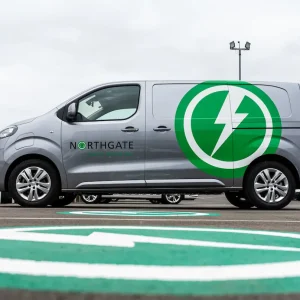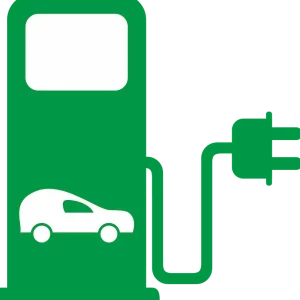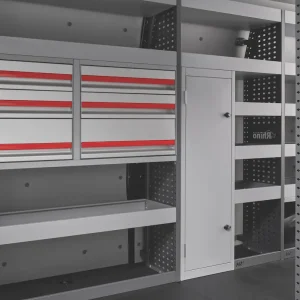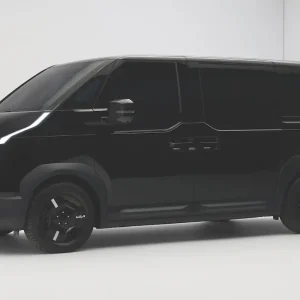With the European Parliament setting challenging targets for light commercial vehicle emissions and stringent penalties for failure to comply, the big commercial vehicle manufacturers are looking at a variety of technologies to help them cut vehicle pollution and get down below an average 175g/km before the penalties start to bite in 2014.
Petrol and diesel engines are becoming more efficient as engineers find ingenious ways to eke out more economy from the traditional power sources, but that doesn’t mean the focus isn’t also heavily on diverse alternative methods of propulsion, both now and in the future. 
The old faithful
Internal combustion engines, mainly of a diesel persuasion, still power virtually all light commercial vehicles, and will continue to do so for the foreseeable future. In the car market, experts estimate that in 2020, 80% of vehicles will still be petrol- or diesel-powered, and there’s no reason to think commercial vehicle uptake will come on any quicker than that.
But that’s not to say developments won’t come thick and fast. The internal combustion engine has been in a state of constant refinement for decades, and the pace of upgrade has only accelerated. New Euro5 regulations become mandatory at the end of 2011, which means all manufacturers have either recently upgraded their LCV engine range or are about to do so. Ford, for example, claims the new cleaner powertrain in its Euro5 Transit 260 SWB will save an operator £1600 in fuel over 80,000 miles.
New additions such as stop-start systems, low rolling-resistance tyres, more efficient automatic transmissions, downsizing of engines through turbocharging and regenerative braking devices have all made their way across from cars, where they are now becoming commonplace, to commercial vehicles. 
Mercedes-Benz can be seen as a pioneer of stop/start systems, which shut the engine off when it’s at a standstill in neutral. The system has been available for many years on the Sprinter and has also been added to the Vito with its recent revision, although still only as optional equipment, while Vauxhall, Fiat, Citroen and Volkswagen are among the others that have introduced systems on their smaller vans that will in time spread up the range.
In fact, some LCV manufacturers are latching onto the marketability of low-emission models, applying a separate branding to the least-polluting vans.
Badge proud
Vauxhall is leading the way, having announced that there will be an Ecoflex-badged version of each of its five commercial vehicles. Admittedly two of these – the Astravan and Combo – are at this stage purely a branding exercise without any reduction in figures against the pre-Ecoflex versions, but the Corsavan gets down to 105g/km thanks to techniques including stop/start, the Vivaro Ecoflex will be a pair of 185g/km models with either 90hp or 115hp engines, and the Movano Ecoflex is probably the most revised of them all. The 202g/km 3.3-tonne model features weight-saving initiatives such as manually operated door mirrors and windows and a tyre repair kit rather than a spare wheel, as well as a 56mph speed limiter. 
But Vauxhall is far from the only manufacturer heading down this line. Ford and VW have both transferred their green brandings over from car to commercial vehicle line-up. In the case of the market leader, Ford has launched a Fiesta Van Econetic, the lowest-emitting diesel van on sale, and an Econetic Transit, while Volkswagen’s new Caddy has a Bluemotion version complete with stop/start and brake-energy recuperation. There will also be a Bluemotion Transporter coming before the end of this year.
Renault has recently started badging some of its commercial range with the Eco2 branding from its passenger cars, if the van is under 200g/km. Stop/start systems aren’t yet on the agenda, but they are about to be introduced on passenger cars, so it wouldn’t be a surprise if the smaller Renault vans saw the system added in the near future.
Electric dreams
As well as the current technology, the future is also edging towards us, and the commercial vehicle market is expected to be the place that electric vehicles will find most immediate acceptance thanks to the increased chance of them running on a set route of known mileage back to a base every evening.
Range has been the big stumbling block, with nothing over 100 miles possible at this stage, and predictions vary on when battery technology could improve to increase potential mileages. The common consensus is that matching a diesel van is still around a decade away. Generally, it takes somewhere around an eight-hour timeframe to fully charge the vehicles, although most have a quick-charge option for getting to about 80% capacity inside 45 minutes.
Iveco produced its first electric Daily van as long ago as 1986, and offers 3.5t and 5.2t electric versions of its current Daily, offering a range of 55-80 miles depending on spec. The firm did, however, admit that it didn’t sell any EV Daily models in 2010, and has called for Government incentives to help speed take-up as the cost of vehicles is prohibitive.
Ford, with a Transit Connect EV built in conjunction with Azure Dynamics, and Renault, with its Kangoo ZE, will this summer launch two more mainstream brands into the rechargeable marketplace, adding to companies such as Allied that have previously offered EV versions of Peugeot vans. Neither the Ford nor Renault suffers from a reduction in load space, as the batteries are fitted under the floor, but there is a small-scale drop in payload thanks to their weight. Renault has said that in the long term the Trafic and Master could be in-line for electric variants, although the size and weight of the vehicles make it more of a challenge. 
While the electric market recently took something of a blow with the collapse of EV pioneer Modec, others are certain to join the sector as electric infrastructures continue to crop up. London, Milton Keynes and north-east England were the first areas to benefit from the Government’s Plugged-in Places to help fuel the installation of charging points in public places and workstations, with another host of areas following in the second wave. But the problem with EVs will continue to be ensuring they can be recharged,
as complete battery failure is significantly more inconvenient than running out of fuel.
Mercedes looks best-placed to be the next mainstream manufacturer offering widespread electric vehicles. Battery versions of its medium-sized Vito van are already running in Spain and Germany, and the first one in the UK will be at April’s CV Show in Birmingham, having been brought over to show to a blue-chip client. By the end of 2011 the electric Vito will be on sale, leased through Daimler Financial Services.
Peugeot is also falling in line, with an electric Partner expected to be available about this time next year.
Volkswagen has made no secret of the fact that it has been testing electric models for a number of years, and looks set to launch a battery-powered Caddy into the market somewhere around 2013. Nissan will launch an electric NV200 around the same time.
Halfway house
Then there’s the halfway house between internal combustion engines and battery power – the plug-in hybrid. Combining a battery recharged from the mains and a standard petrol or diesel engine, normally of a smaller capacity than might be expected, the plug-in hybrid will run for the first 50 or so miles on battery only, but has the engine as back-up should it run out of juice before being in a position to be recharged. The combination, while not as efficient as pure electric models, is a great solution to the range-anxiety issues that worry operators, at least until there is a full-scale recharging network out there.
Vauxhall showed a prototype Vivaro plug-in hybrid van, called e-concept, at last year’s Hanover commercial vehicle show, using a small petrol engine to act as a generator, recharging the electric motor when the battery runs down.
Volkswagen has also confirmed it is working on a similar system for the Transporter, although there’s no schedule yet for when that will make production.
Looking at pure hybrids that combine a petrol engine with a battery that recharges itself by capturing the energy wasted under braking, Peugeot and possibly stablemate Citroen could potentially push the diesel hybrid technology from cars into the van market at some point in the future, although nothing is yet timetabled.
Gassing away
An option that’s failed to even grab a foothold despite really taking off across Europe is CNG. Greener to burn than petrol or diesel, the need for a new refuelling infrastructure is holding back uptake on these shores. However, some larger companies do run enough vehicles to make it worth bunkering the fuel. Between vans and chassis cabs, Iveco offers 28 gas-powered models, while Volkswagen has a CNG Caddy on its UK price list. Like Fiat and a number of other brands, Mercedes offers gas-powered models abroad, and is running trials in the UK, but the lack of infrastructure is a huge stumbling block, especially with people reluctant to invest in a new gas fuel after being burned by the brief rise and then hefty fall of LPG in the past 10 years.
Gas gone
Liquified petroleum gas was en vogue for a while in the early 2000s, when the Government Powershift grants encouraged people to move to cleaner cars. But the money dried up, the price of LPG started to rise (but it’s still well under half the price of diesel) and there were question marks about its greenness.
Some manufacturers still offer LPG vehicles, Citroen and Vauxhall in particular keeping petrol light commercial vehicles in their smaller van line-up specifically to maintain an LPG presence. They have found a niche in London thanks to being congestion charge-exempt, although new LPG vehicles no longer get the 100% discount and existing registered vans will only be congestion charge-exempt until the end of next year.
Biodiversity
Citroen has pressed ahead into offering biodiesel, and its vans are all capable of running on a 30% biodiesel mix without modification or impact on warranty. The 30% mix has to be specially sourced, but supermarket chain Morrisons was selling the blend in its filling stations until last year. Otherwise it‘s only really an option for fleets bunkering their own fuel, but the financial and environmental benefits are there to be had in that case.
And there’s more
All this gives a snapshot of the work going on in the light commercial vehicle market to cut vehicle emissions, and as a result, running costs. We can guarantee that behind closed doors there is another whole pile of innovation that manufacturers aren’t ready to reveal to the world yet.
The European targets of a fleet average 175g/km will hasten developments in cutting emissions and therefore raising economy, and in the longer term the Holy Grail remains hydrogen fuel cell power, which has zero harmful emissions and no range anxiety. But that remains at least 10 years away and has large infrastructure, storage and financial hurdles to overcome before it’s even worth considering. In the meantime, the range of developments outlined here, from optimising the internal combustion engine to electric vehicles, or less-mainstream solutions such as natural gas or hybrids, will progress rapidly, potentially in line with new taxation plans as well as European emissions laws and targets. What’s clear is that these things are well worth paying attention to because times are changing and environmental considerations are only ever going to become more of an issue in the LCV marketplace.
Euro5 emissions legislation
Coming into effect from 1 January 2012 for commercial vehicles, the Euro5 emissions standards cover carbon monoxide, particulates, nitrogen oxides and hydrocarbons – all emissions that are responsible for local air quality, rather than the CO2 focus that’s been cited in climate change discussions. Commercial vehicles are given an extra year to comply, compared with their passenger car equivalents, which had to meet Euro5 at the beginning of this year. Even more stringent regulations, known as Euro6, that the industry is worried will require expensive modifications to make diesel engines in particular compliant, will come into force for light commercial vehicles from 1 January 2016.





